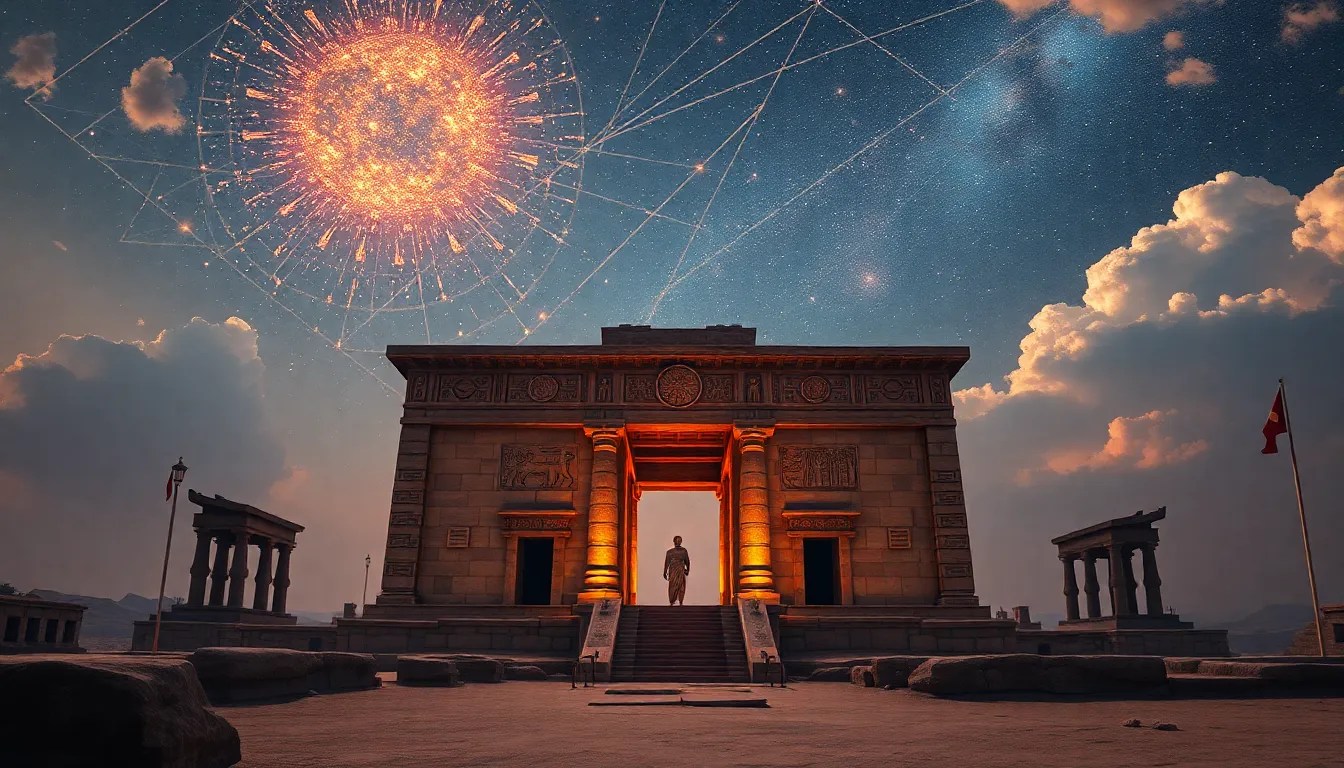The Connection Between Divination and Astronomy in Babylon
I. Introduction
Divination and astronomy are two profound aspects of human inquiry that have shaped cultures throughout history. Divination, the practice of seeking knowledge of the future or the unknown through supernatural means, played a crucial role in many ancient societies. Astronomy, the scientific study of celestial bodies and their movements, has provided insights into our universe.
In Babylon, a prominent civilization in ancient Mesopotamia, both divination and astronomy were interwoven, influencing daily life and governance. This article aims to explore the interplay between these two fields within Babylonian society, highlighting their historical significance and cultural impact.
II. Historical Context of Astronomy in Babylon
The development of astronomical knowledge in Mesopotamia dates back to the third millennium BCE, with Babylon emerging as a center of astronomical research by the second millennium BCE. Babylonian astronomers made significant contributions to the understanding of celestial phenomena, including:
- Creating a lunar calendar based on the cycles of the moon.
- Documenting the movements of planets and stars.
- Developing mathematical methods to predict eclipses and other celestial events.
These achievements laid the groundwork for future astronomical practices, influencing Greek and later Roman astronomy. Babylonian techniques, such as the use of ephemerides, were essential for later civilizations’ understanding of celestial mechanics.
III. Understanding Divination in Babylonian Society
Divination in Babylon encompassed various practices designed to interpret omens and predict future events. Major types included:
- Extispicy: The examination of animal entrails, particularly the liver, to discern omens.
- Astrolatry: The worship of celestial bodies, believing that stars and planets influenced earthly events.
- Dream interpretation: Analyzing dreams for prophetic messages.
Divination held a vital role in governance, where kings and priests relied on omens to make decisions about wars, agricultural practices, and public policy. Key figures such as priests and diviners were often consulted, and texts like the “Instructions of Shuruppak” provided guidelines for interpreting various signs.
IV. The Interconnection of Astronomy and Divination
The celestial calendar was a fundamental tool in Babylonian divination, helping diviners to determine auspicious days for various activities. Astronomical events, such as eclipses or the appearance of comets, were interpreted as significant omens, often signaling divine anger or favor.
Ritual practices combined astronomical observations with divinatory readings, including:
- Observing celestial alignments during religious ceremonies.
- Using specific astronomical events to time divinatory practices.
- Integrating lunar phases into ritual calendars to enhance divination accuracy.
V. Major Texts and Artifacts Linking Astronomy and Divination
The “Enuma Anu Enlil,” a comprehensive astrological text from Babylon, exemplifies the connection between astronomy and divination. This collection of omens derived from celestial events served as a guide for interpreting signs and was vital for the practice of divination.
Cuneiform tablets related to astronomical divination reveal detailed records of observations and predictions. Artifacts, such as clay tablets depicting celestial charts and omens, provide valuable insights into how Babylonians integrated these practices into their worldview.
Iconography in Babylonian art often reflects celestial themes, with motifs of stars and planets appearing in temple decorations and seals, emphasizing the significance of astronomy in their spiritual and political life.
VI. Case Studies of Specific Divinatory Practices
Specific omens derived from celestial phenomena illustrate the practical applications of Babylonian divination. For example:
- The appearance of a red star was interpreted as a harbinger of war.
- Solar eclipses were considered bad omens for the reigning monarch.
- Comets were often seen as foretelling disaster or significant change.
Historical records show instances where decisions were made based on astronomical divination, such as military campaigns initiated after favorable omens were observed. Notable predictions have also been documented, influencing cultural narratives and collective memory within Babylonian society.
VII. The Legacy of Babylonian Astral Divination
The influence of Babylonian astral divination extended far beyond its time, shaping the practices of later cultures and civilizations. The transition of these practices into Hellenistic astrology was significant, as Greek scholars absorbed Babylonian knowledge and adapted it to their own systems of thought.
Roman astrology also drew heavily from Babylonian traditions, further solidifying the connection between astronomy and divination throughout history. In contemporary times, the legacy of Babylonian practices can be seen in modern astrology, where celestial movements continue to be interpreted for personal insights and predictions.
VIII. Conclusion
In summary, the exploration of the connection between divination and astronomy in Babylon reveals a rich tapestry of beliefs and practices that defined an entire civilization. The interplay of celestial observations with divinatory practices not only shaped Babylonian culture but also laid the foundations for future astronomical and astrological systems.
Understanding this connection enriches our appreciation of Babylonian mythology and its enduring relevance. We invite further exploration and research into these ancient practices and beliefs, as they continue to inspire curiosity and insight in the realms of mythology and science.



